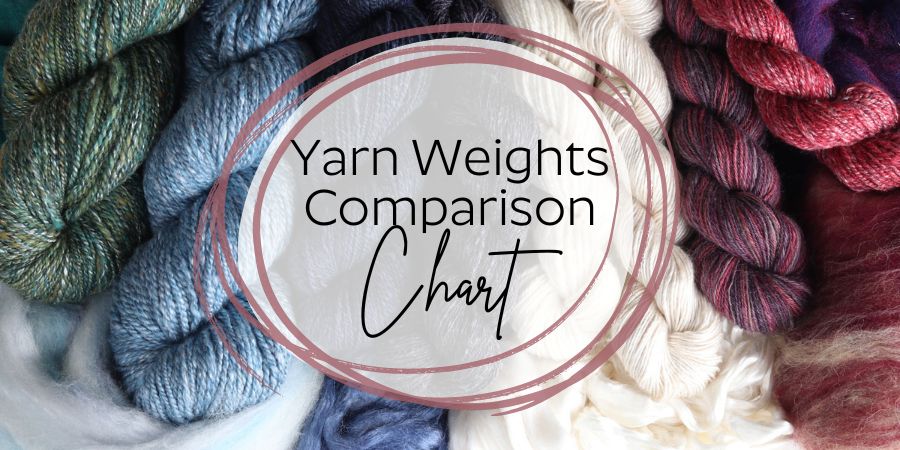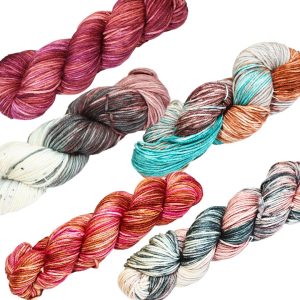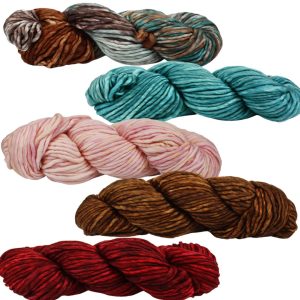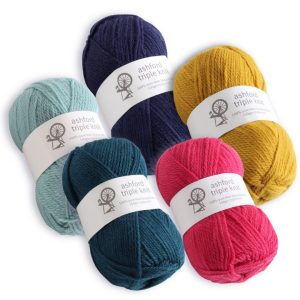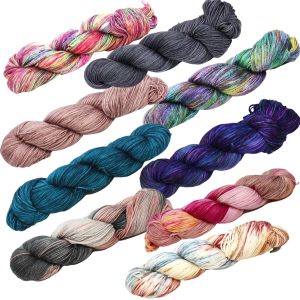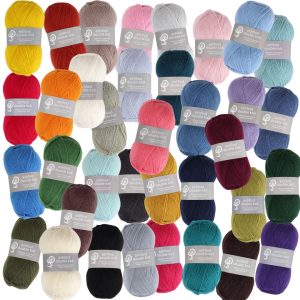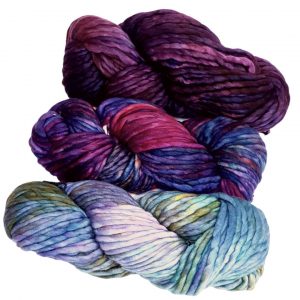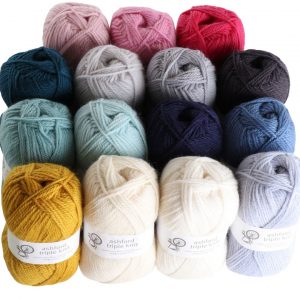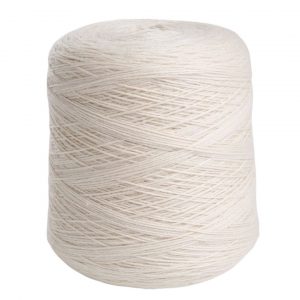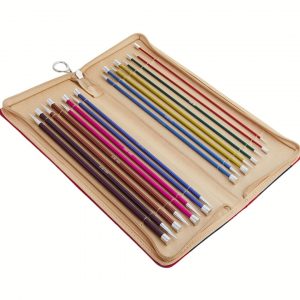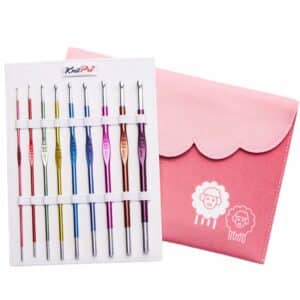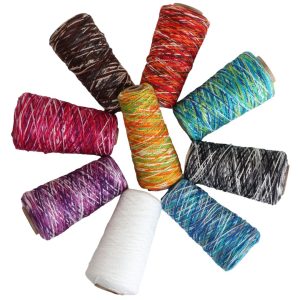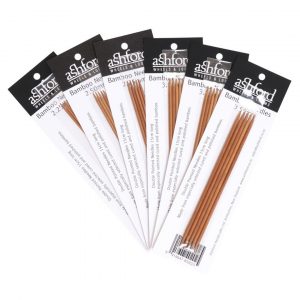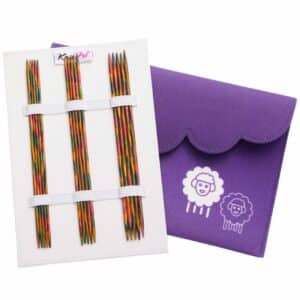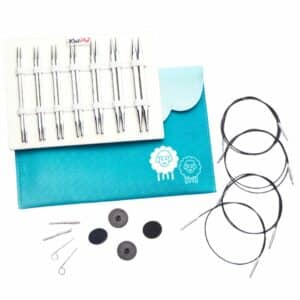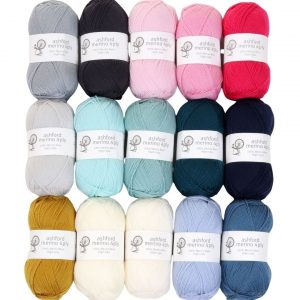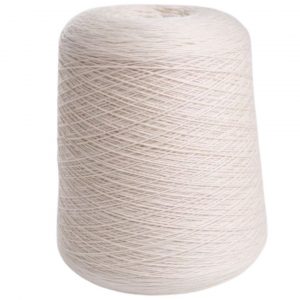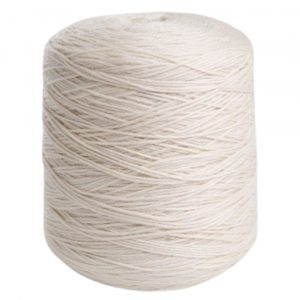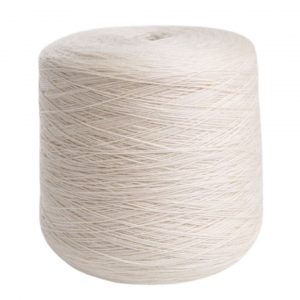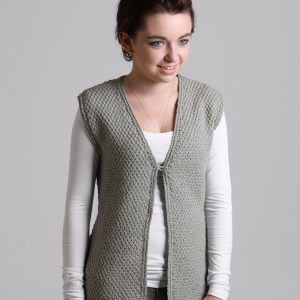Working out the correct yarn weight for your project can be confusing if you are using a pattern from a different country. Below I will attempt to explain some of the different terms and the comparisons with our yarn weights conversion chart.
- Australian & New Zealand Yarn Weights
- European / UK Yarn Weights
- American Yarn Weights
- What is Double Knit and Triple Knit Yarn
- Yarn Weights Comparison Chart
- Knitting Needle & Crochet Hook Size Chart
Yarn weight is simply a way of categorising yarn based on its thickness or “weight”. This can affect the final outcome of a knitting or crochet project, making it to big, too small or incorrect tension. The thickness of a yarn is most often measured in terms of the number of wraps per inch (WPI) or in a standardised system, by using terms such as lace, fingering, sport, worsted, and bulky.
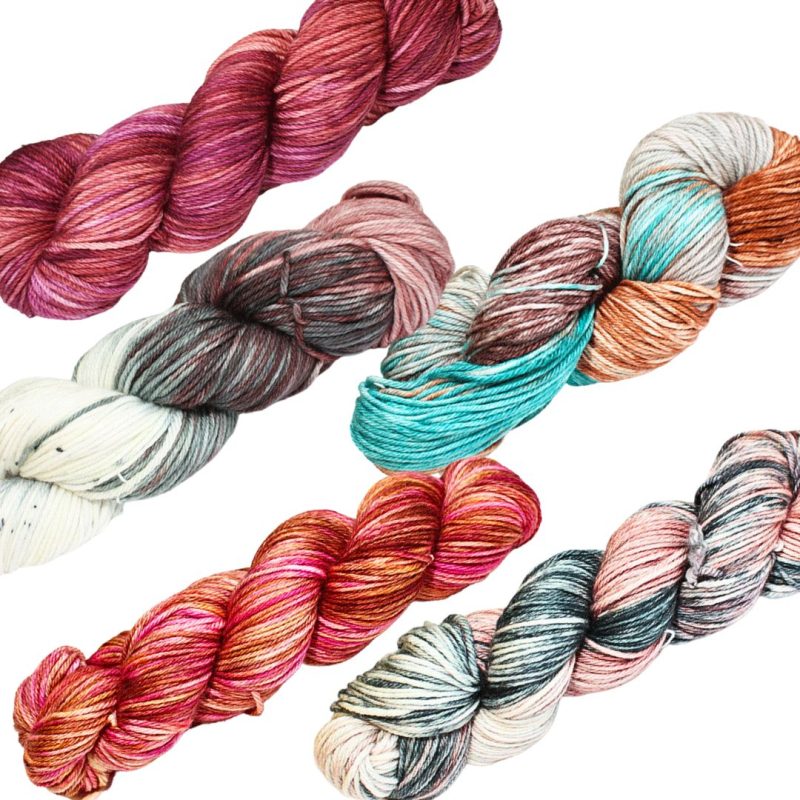
However, it’s important to note that the weight classification and naming conventions can vary between countries, regions, and manufacturers. In Australia, we often get knitting patterns from many different countries. Therefore, its important to be able to easily identify the descriptions.
Following is a general overview of how yarn weight categories are commonly defined in Australia, Europe, and America. And also, how they compare to each other.
Australian and New Zealand Yarn Weights
In Australia and New Zealand, yarn weights are categorized using the Ply system, which is based on the number of strands twisted together to create the yarn. The higher the ply number, the thicker the yarn. The most common ply weights are 2-ply, 3-ply, 4-ply, 5-ply, 8-ply, 10-ply, and 12-ply.
European / UK Yarn Weights
In Europe, yarn weights are commonly classified using the Metric system, which measures the weight of the yarn in grams per meter (g/m) or the thickness in millimetres (mm). The most common metric weights are 2-ply, 3-ply, 4-ply, 5-ply, 6-ply, and 8-ply, although some brands may use different terms such as “fine,” “light,” “medium,” and “heavy.”
American Yarn Weights
In America, yarn weights are classified using the Craft Yarn Council’s Standard Yarn Weight System, which groups yarns into seven categories based on their thickness, from lace (the thinnest) to jumbo (the thickest). The seven categories are:
Lace: 0 (also called “thread” or “cobweb”). Fingering: 1 (also called “sock” or “baby”). Sport: 2 (also called “light”). Worsted: 4 (also called “medium”). Bulky: 5 (also called “chunky”). Super Bulky: 6 (also called “super chunky” or “roving”) And finally, Jumbo: 7 (also called “jumbo” or “craft”)
It’s worth noting that some manufacturers may use different terms or numbers to describe their yarn weights, and the best way to ensure you’re using the correct yarn for your project is to check the recommended gauge on the pattern and match it to the yarn label.
What is Double Knit and Triple Knit Yarn
Along the way, you will also hear terms such as double knit and triple knit. Double knit yarn (DK) is not typically used as a category in Australia, but as it is widely used overseas, you will hear yarn sold in Australia using these terms. Generally double Knit refers to a yarn that is slightly thicker than 8-ply. Similarly, triple knit yarn (TK) is used to describe a yarn that is equivalent to 12-ply.
In Europe, the term double knit (DK) is used to describe a medium-weight yarn that is slightly thicker than a sport weight yarn. Double knit (DK) is classified as a weight category 3 yarn, which is between sport and worsted weight. Triple knit (TK) is not a common term used in America.
To compare the American and Australian systems, a 2-ply yarn in Australia is similar in thickness to a lace weight yarn in America. A 8-ply yarn in Australia is similar to a worsted weight yarn in America.
What ply is worsted weight yarn in Australia?
In Australia, worsted weight yarn is often referred to as 10 ply. The terminology can vary between countries and regions. Therefore in some patterns worsted weight yarn might be referred to as 4 ply. Making it always important to check the origin of your pattern. In Australia, worsted weight yarn is commonly known as 10 ply. This discrepancy in terminology can sometimes lead to confusion, but understanding the where your pattern has been designed, is essential when selecting yarn for projects.
What is Aran weight yarn in Australia?
In Australia, Aran weight yarn is typically referred to as 10 ply. Similar to the situation with worsted weight yarn, the terminology can vary between countries and regions. While Aran weight yarn is often designated as 4 or 5 ply in some places, in Australia it’s commonly known as 10 ply.
What is Heavy Worsted Weight Yarn?
h\Heavy worsted weight yarn is commonly referred to as 12 ply in Australia. This weight of yarn is thicker than traditional worsted weight (10 ply) and is suitable for projects that require a chunkier texture or a quicker knit.
Yarn Weights Comparison Chart
| Australian Yarn Weight | American Yarn Weights | Europe / UK Yarn Weights | Suggested Needle Size for Yarn Weights |
| 2 Ply | #0 – Lace / Fingering | 1 ply | 1.5mm – 2.25mm |
| 3 Ply | #1 – Super Fine / Sock / Fingering | 2 Ply | 1.5mm – 2.25mm |
| 4 Ply | #2 – Light | 3 ply | 1.25mm to 3.5mm |
| 5 Ply | #2 – Sport | 4 ply | 3.5mm – 4.5m |
| 8 Ply | #3 – DK / Light Worsted | DK | 4.5mm – 5.5mm |
| 10 Ply | #4 – Worsted | Aran | 5.5mm – 6.5mm |
| 12 Ply | #5 – Bulky or Chunky | Chunky | 6.5mm – 9mm |
| 14 Ply | #6 – Super Bulky | Super Chunky | 9mm+ |
Knitting Needle & Crochet Hook Size Chart
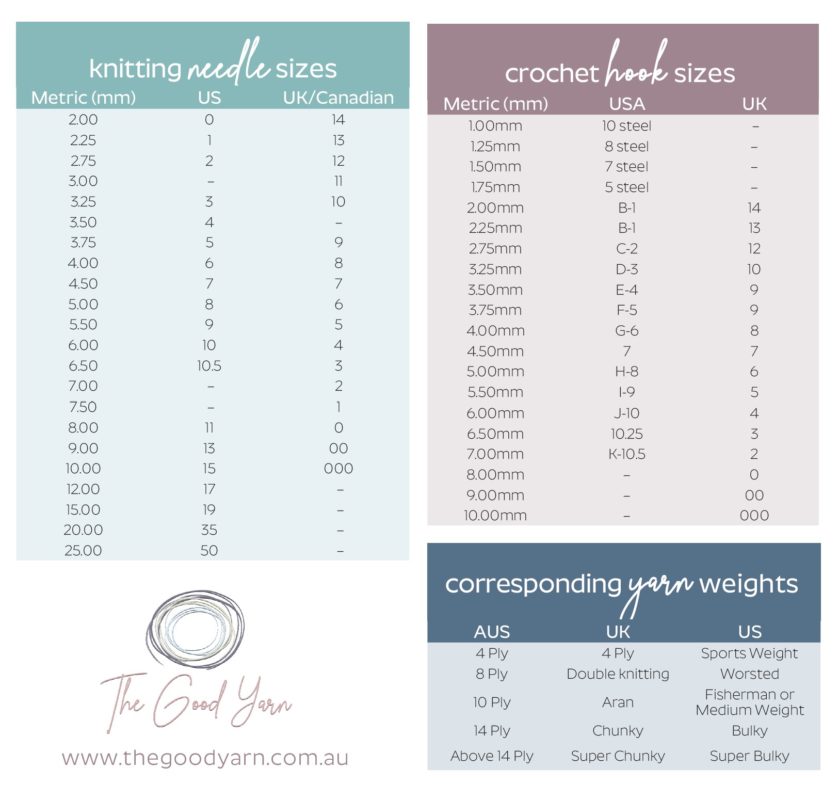
Learn more about cotton weights here
-
25cm Knitting Needles Set – Zing Metal
-
Ashford Double Knit 8 Ply Yarn
-
Ashford Bamboo Double Pointed Knitting Needles
-
KnitPro Symfonie Double Pointed Knitting Needles Set
-
Knitting Needles – Nova Cubics Deluxe Interchangeable Set
-
Sock Yarn – Australian Hand Dyed
-
Ashford Triple Knit 12Ply Yarn
-
Ashford Merino 4Ply Yarn
-
Ashford 100% Merino 4 Ply (NON-Superwash) Cone
-
Ashford 100% NZ Wool Triple Knit 12 Ply Cone
-
Ashford 100% NZ Wool 4 ply (3 fold) Cone
-
Ashford 100% NZ Wool Double Knit Cone
-
Pattern – 8Ply Yarn – Double Moss Stitch Vest

